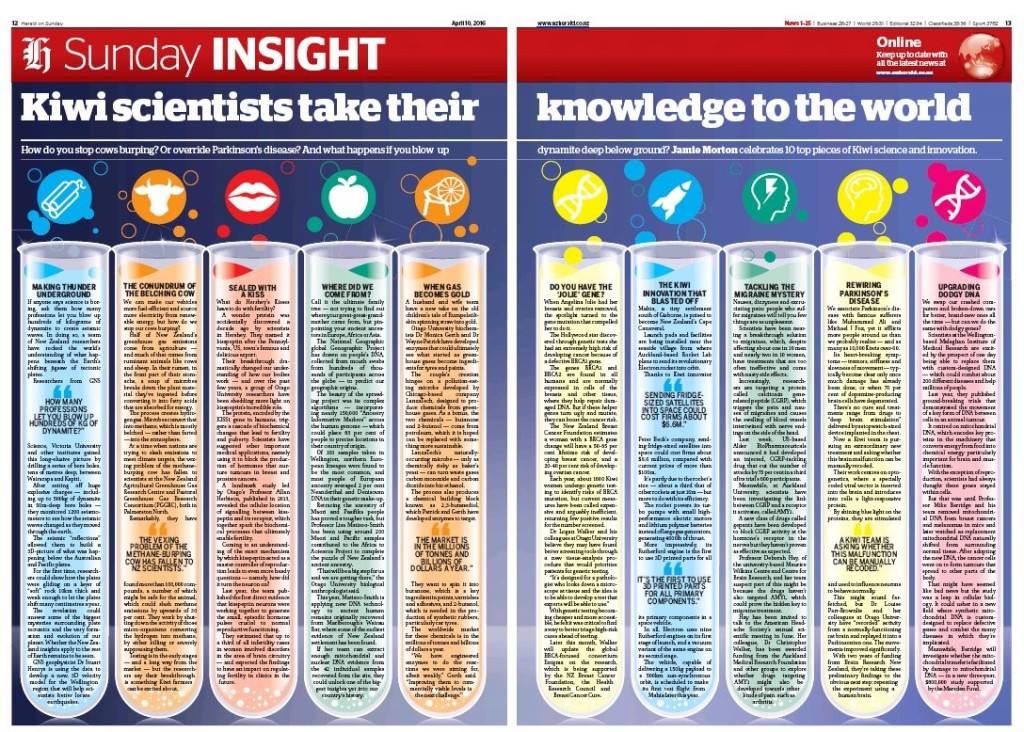In a two-page spread in the Herald on Sunday, science journalist Jamie Morton lays out ten New Zealand science and innovation success stories, ranging from migraines to methane.
You can read the full feature online here.

An excerpt:
Making thunder Underground
If anyone says science is boring, ask them how many professions let you blow up hundreds of kilograms of dynamite to create seismic waves. In doing so, a team of New Zealand researchers have rocked the world’s understanding of what happens beneath the Earth’s shifting jigsaw of tectonic plates.
Researchers from GNS Science, Victoria University and other institutes gained this long-elusive picture by drilling a series of bore holes, tens of metres deep, between Wairarapa and Kapiti.
After setting off huge explosive charges – including up to 500kg of dynamite in 50m-deep bore holes – they monitored 1200 seismometers to see how the seismic waves changed as they moved through the earth.
The seismic “reflections” allowed them to build a 3D-picture of what was happening below the Australian and Pacific plates.
For the first time, researchers could show how the plates were gliding on a layer of “soft” rock 10km thick and weak enough to let the plates shift many centimetres a year.